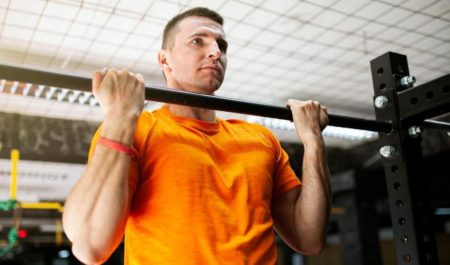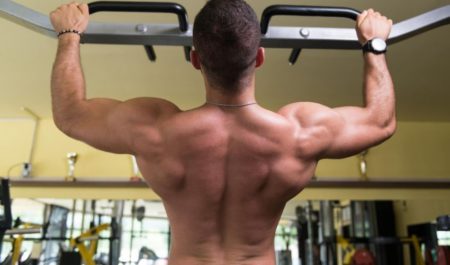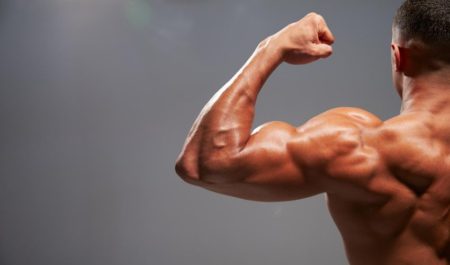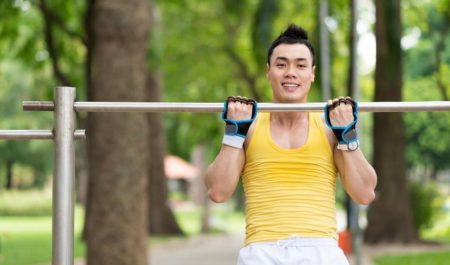You might be one of the people who cannot differentiate pull up vs chin up exercises. You are not the only one. These exercises are similar, one way or the other your body would be pulled up as you are doing them. They are both goods in strengthening the upper body. However, pull up vs chin up workout in a different way.
Other differences between the two exercises can be noticed in movement, the way you grip the bar, safety, and strength. After going through this article, you will be in good space to differentiate between pull up and chin up exercises. Always remember to do an overhand grip for a pull up and an underhand grip for a chin up.

What Is Pull Up Vs Chin Up Exercise?
A pull up is an intense work out that is good for strengthening your body. Almost every strength trainer would recommend this exercise to clients who are interested in strength exercises. To do the pull up exercise you will need a pull up bar. Most importantly, you put your hand over the bar when you are doing the pull up.
That is you do an overhand grip. Your palms would be facing away from you as you hold onto the pull up bar. Then you pull up your body weight in such a way that your elbows would be fully bent. At most, your entire face should be above the bar. You can do several reps as much as you can.
Then the chin up exercise is also a difficult workout that targets the upper body. There is no doubt that the chin up can strengthen your upper body like pull up exercises. For chin up exercise, you do an underhand grip. That is you hold onto the bar with your palm facing you as if they are under the bar.
Like the pull up, you have to pull up your body towards the bar. Make sure that your chin gets above the bar. To control your body weight, you can cross your legs with your knees bent.
What’s The Difference Between Pull Up And Chin Up?
As explained above, pull up vs chin up exercises are different. The way you hold the bar is different. As for pull up, you do the overhand grip and for chin up, you do the underhand grip. The distance position of your hands or the grip distance is also different in these exercises.
That is in chin up you maintain a shoulder-width gap between your hands when you are holding onto the bar. As for the pull up, the grip distance is slightly wider than the shoulder width. The body movements might seem to be similar when you are these exercises but they differ mechanically.

You use shoulder adduction when you pull up your body weight using the pull up exercise. That is your elbows bend and come down from your sides. Then when you are doing the chin up, you use the shoulder extension technique. That is the elbows come down in front of you.
In addition, the intensity of the two exercises is slightly different. Most beginners find it easy to do the chin up than the pull up exercise. You can do more reps of chin up exercise but when it comes to pull up, it can be difficult to complete the same number of reps.
The impact of these exercises also different from one another. They all work similar body muscles such as the biceps and lats but the impact is different. Chin up exercise is good at working bicep muscles in comparison to the pull up. On the other hand, the pull up is ideal for strengthening the lats muscles compared to the chin up.
Similarities In Pull Up Vs Chin Up Exercises.

Most people can’t differentiate the pull up exercise from the chin up exercise. This is because they are more of the same. The differences are there but they are not a big deal. The two exercises are good in strengthening the upper body muscles and core. They are good at working out the lats, biceps, shoulders, and core. You also use the same equipment when doing the chin workout or the pull up exercise.
Which Muscles Does Pull Up Vs Chin Up Work?
The two exercises work on similar muscles but in a different way. For instance, the pull up exercise works more on lats and outer back muscles. Then the chin up majors on biceps. The pull up exercise can have an impact on the biceps but not as much as the chin up exercise would do. In general, the two exercises are good in improving the rhomboids, trapezius, core muscles, forearms, brachialis, pecs muscles, and many other upper body muscles.
How To Do Pull Up Step By Step?
- Begin by holding the bar with both hands. The palms should face away from your body. The grip distance can be wider than shoulder-width.
- You can cross the legs and then start lifting your body weight up contracting your shoulders.
- Keep pulling the body up until the whole face is above the bar
- Lower the body to the starting point. You must do it slowly and carefully to avoid injuring your body.
- Repeat the moves as much as you can
How To Chin Up Step By Step?
- Hold the bar with palms facing your body at a shoulder-wide distance or a little narrower.
- You can cross your legs and then lift your body up contracting your elbows and shoulder blades.
- Pull your chest up towards the bar.
- Continue to pull your body up until your head is over the bar.
- Bring back your body to the starting point.
- Repeat the move

Safety Tips For Pull Up And Chin Up.
- Lock your legs by crossing them to avoid swinging them. Swinging your legs can defeat your aim of strengthening your upper back muscles. As a thumb rule, keep your legs still.
- Loosen your neck as you lift your body. This will lower the risk of a neck injury. Your neck might be strained or injured if you tighten it when lifting your body weight.
- Train your body prior to doing the pullup and chin up exercise. Training biceps is ideal and you can use dumbbells.
- Know how to hold the bar when you are exercising. That is remember to do underhand grip for pull up and overhand grip for chin up.
- Engage your chest and shoulders more than your arms. In other words, focus more on your chest and shoulders as you lift up your body.
- Know when to stop exercising. Don’t over push your body, stop exercising when there is a need to.
Take Away
Whether to go for pull ups or chin ups depend on the purpose of your exercise. The two exercises focus on the similar upper body muscles like the lats and biceps. They are good at strengthening the upper body muscles. Some of the muscles that can benefit from the two exercises include the trapezius, rhomboids, brachialis, pecs, core, and many others.
However, pull ups and chin ups have a different impact on these muscles. Pull ups are good in lats while the chin up is good in biceps. Another major difference between the two exercises is on movement and the grip position. as you do the pull ups remember that your hand palm must face away from your body. Then when doing the chip, your hand palm faces towards your body or face.
Between the pull up and chin up exercise, which one do you prefer and why? Share your experiences.

Thank you so much for sharing us an interesting and informative article. The main theme of this article is about 101 Pull Up VS Chin Up. It is really laudable that you have illustrated this topic so well in your article. I have learned a lot by reading your article and gained a lot of cognition about it. Of the points mentioned in your article, I like Safety Tips For Pull Up And Chin Up. I always prefer to pull up exercise because it will make your muscles stronger and it can be done at any time. Also, do these pull-up exercises when I am at home.
Finally, I enjoyed reading your article and so I’d like to share your article in my Facebook group if you allow me.
Thanks for your comment. sure, this exercise is more effective to gain the strength of the body. And it is supporting to wider your upper chest. Try your best and gain fast results. and share it with your friends.